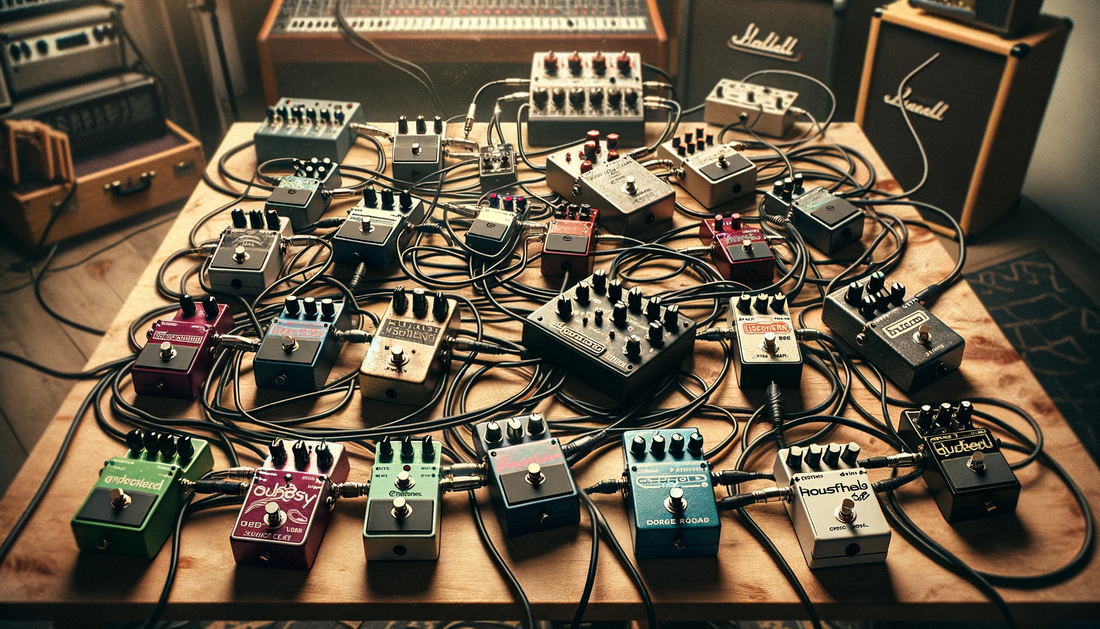
What is the best order of your guitar effect pedals in the signal effect chain?
Share
Order of your guitar effect pedals
What many guitarists don't know is that the order in which you place your guitar effects in your effects chain makes a big difference. This way, an effect can suddenly sound much different (which doesn't always have to be negative).
Brief Overview
At the front of the effects chain, you put the tuner. After that comes your wah wah, filter, phaser. Then comes your compressor. Next are your distortions/overdrives/fuzzes. Lastly, you place a boost, chorus, delay, and reverb.
The above applies to 90% of cases. However, there are certain fuzzes that need to be at the front of the chain,because they do not tolerate buffered pedals. The impedance difference causes you to lose dynamics when turning your volume knob. The fuzz doesn't sound as raw as you would want.
Why in that order?
Tuner
Starting with the tuner seems logical. After all, you don't want your note to be distorted by the effects that are turned on (or off) before it.
Wah wah, filters, phaser
These are effects that change frequencies. Ideally, this is done first, because with a previously processed signal (e.g., by a distortion), the effect will sound different and less clear (read: worse).
Compressor
Now comes the compressor on your board. The volume peaks that often occur with wahs (or other filters) are captured here and turned into a smoother and more balanced sound. This benefits the drive pedals that come after.
Distortions/overdrives/fuzzes
These drive effects are undoubtedly the most used by guitarists. There are many differences between them, and what often happens is that they are also stacked (piled up). One drive pedal before another can sound good, but in the reverse order, it can sound terrible. It is therefore a matter of testing which order sounds best for you. Often the internal amplification (gain) of the effect plays a big role: low-gain pedals go before high-gain pedals, because the latter often introduces the most noise into your chain. And you don't want to amplify that again.
As mentioned above, certain fuzzes can sound different after buffered pedals. These should then be placed at the front of your chain. Again, this is something to test out; you will notice if the pedal responds and sounds good or not.
Flanger/chorus
These are so-called modulation effects, where part of the effect is processed and fed back. If you use this in combination with your drive, for example, you retain the stereo aspect of a chorus.
Delay/echo
Often these are placed quite at the end of the chain. However, this varies by type (analog, digital, dry-out, etc.) and is a matter of trying out! Some delay pedals handle overdrive better than others.
Reverb
Your reverb is almost at the end, at least after the delay effects.
Boost
This pedal can be placed in several spots: before the overdrive (for extra gain of that pedal), before the delay (if it otherwise starts to sound bad), but usually at the end so that your entire effects chain is amplified.
Volume Pedal
Volume pedals can be placed at the beginning of the chain, or at the end. It just depends on what application you want: If you put the pedal at the beginning, your drive pedals get less signal and can sound different. If you want to change the final sound volume, then you put it at the end.
